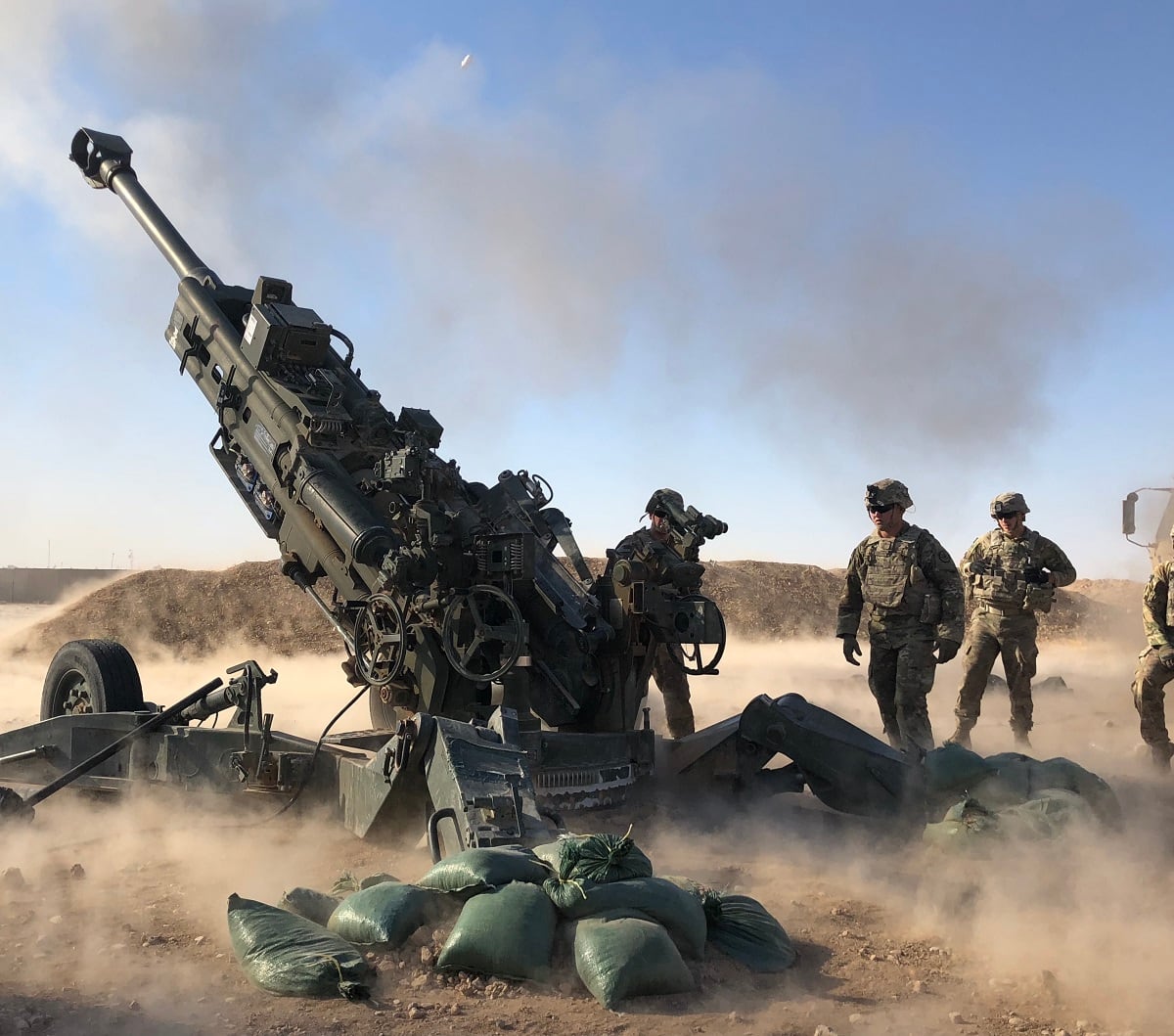FREDERICKSBURG, Virginia — In the next two years the Army will test a completely integrated artillery system that can fire twice as far and twice as fast as what soldiers currently use.
At the same time, the center that oversees that development and others has also upgraded fire controls that will allow hits on the first or second shot by merging soldiers and semi-autonomous systems.
RELATED

Those updates were shared today by Anthony Sebasto at this year’s National Defense Industrial Association Armament Systems Forum. Sebasto is the executive director of the Enterprise and Systems Integration Center for the Combat Capabilities Development Command Armaments Center.
Extended Range Cannon Artillery tests pushed the new Excalibur round to 62km at Yuma Proving Ground last year, Sebasto said.
The goal is 70km and a rate of fire of six to 10 rounds per minute with advances in autoloaders. That would more than double current ranges and rates of fire.
Another improvement is coming via accuracy. The center’s work on scenario-based fire control is pushing a 50mm system to give vehicle systems “tank-like lethality,” Sebasto said. What that means is hitting a target downrange in the first or second shot rather than dozens of rounds that were required in recent conflicts with firing systems on platforms such as the Bradley.
That work began in the Multi-Caliber Armament System using a 30mm gun last year. The 50mm demonstration is planned for later this year, Sebasto said.
Going beyond that, the center is pushing to a Next Generation Intelligent Fire Control. That fire control incorporates target location and “decision logic algorithms” to speed up the find, fix and track portions of the kill chain.
With that software backbone, the shooter can link in other sensors, such as direct data feeds from drones, to better target the rounds at deeper distances.
A step further will be when artificial intelligence is added to help with target detection. The goal is to reduce crew workload on the firing systems and reduce the kill chain timeline, he said.
One aviation platform the Army’s still developing, an attack reconnaissance helicopter in the Future Vertical Lift program, falls within some of the center’s armament work as it will likely fire the 20mm.
That’s a shift from 30mm gun on the current Apache attack helicopter.
“This is a hard problem,” Sebasto said of getting 30mm capability in a 20mm package.
They’re using technology developed for 30mm airburst munitions in past programs to tackle that problem, he said.
Sebasto’s center is working on 40mm weapons for individual soldiers to take down small drones. They’ve also been upgrading the Common Remotely Operated Weapon System, CROWS, to allow for the standard .50 caliber machine gun to shoot down drones as well.
The director said that the aim is to find low-cost solutions for low-cost threats such as commercially available drones.
Likely a little more expensive than conventional munitions, but still cheaper than missile, are the medium-caliber weapons that give soldiers an airburst or guided caliber to hit at least Group I and possibly Group II and Group III drones at longer ranges with fewer rounds.
That’s especially important as future scenarios likely mean drone swarms rather than single or double aerial threats.
“It’s enough to address one to two; what might happen with swarming?” he said.
Todd South has written about crime, courts, government and the military for multiple publications since 2004 and was named a 2014 Pulitzer finalist for a co-written project on witness intimidation. Todd is a Marine veteran of the Iraq War.




